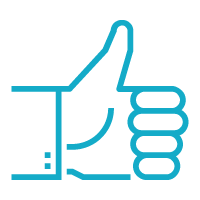Working with Us
Our process is simple, transparent, and collaborative.
And we’ll guide you every step of the way.
Meet the Great American Team!
Great American designers apply their talents and expertise to authoring the emotional and experiential stories that a space needs to evoke.
What does this mean?
In a healthcare setting, the design story will be one of hope, renewal, and healing. In a corporate setting, that story might be one of innovation, energy, and progress. In an educational setting, that story will reflect exploration, growth, and discovery. In a government setting, the story will celebrate duty, loyalty, and service.Our Human-Centric Process
We take full ownership of a project from beginning to end in order to reduce stress, minimize anxiety, and make the entire journey as engaging, fun, and inspiring for you as it can be. And we’re really good at what we do. We have to be to keep up with you.
In the Discovery Stage, we focus on listening instead of speaking, and seeking instead of deciding. This often involves on-site meetings, walkthroughs, and web conferencing. Our goal is to get close to the people we’ll be working with, and with the spaces we’ll be working in. This is how we engage with and explore the needs and goals of each of three key stakeholders:
- The Individual (e.g. a patient, a customer, or a staff member).
- The Organization (your business, your brand, and the perception of the quality of care or service provided.
- The Environment (the space, or spaces, being transformed).

How would we describe our design process? “Mentored collaboration”. We’ll lead you step-by-step through vision development, image selection, and proposal finalization. At this stage, we focus on art consultation, install conceptualization, image selection, art sourcing, lighting management, art placement, and more.
- Already have a vision? We’ll help document it. Need a vision? We’ll work with you to create a detailed design vocabulary.
- We have an extraordinary art library to draw from, yes. But our art expertise goes way beyond what’s readily and immediately at hand. Custom commissions, original art pieces, sought-after artists, and more.
- Finally, the deliverables. Detailed floor plans, an art index, and clear and transparent project quotes, all presented in a format you’ll be proud to share with your client, your board, or your donors.

When we say ‘end-to-end’, we mean it. Our ability to own production and installation lets us better manage costs so we can be as budget agnostic as possible. It also allows us to maintain high QA standards and industry leading service levels.
Our ultimate goal? Deliver the art program you want, not the one you think you have to settle for, on time and on budget.
- Modern production capabilities built on cutting-edge manufacturing technology allow us to produce beautiful, vivid art on a wide variety of materials.
- Supply chain and logistics expertise let us deliver industry-leading service levels that are second to none.
- Installation of custom pieces like sculpture or mobiles is also closely managed.
- The end result? Engaging spaces that have been transformed to delight and inspire.